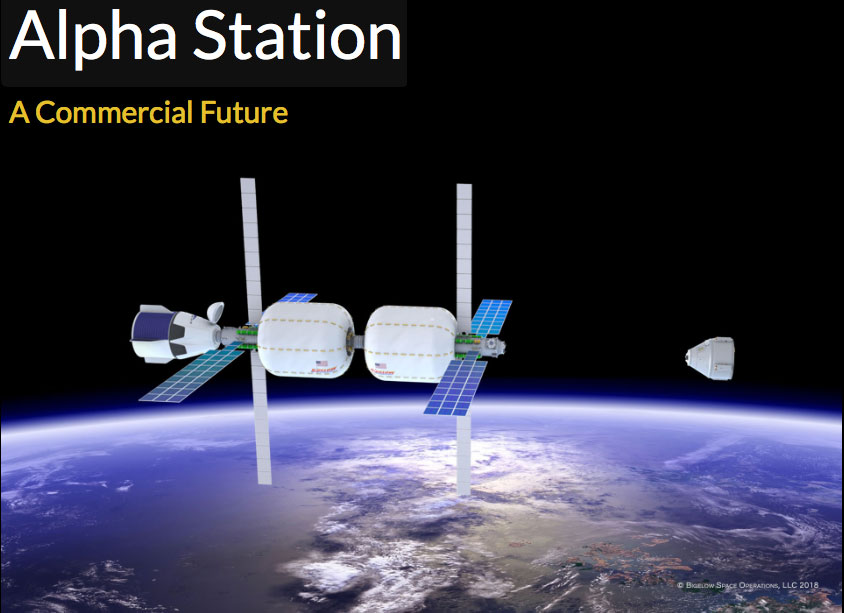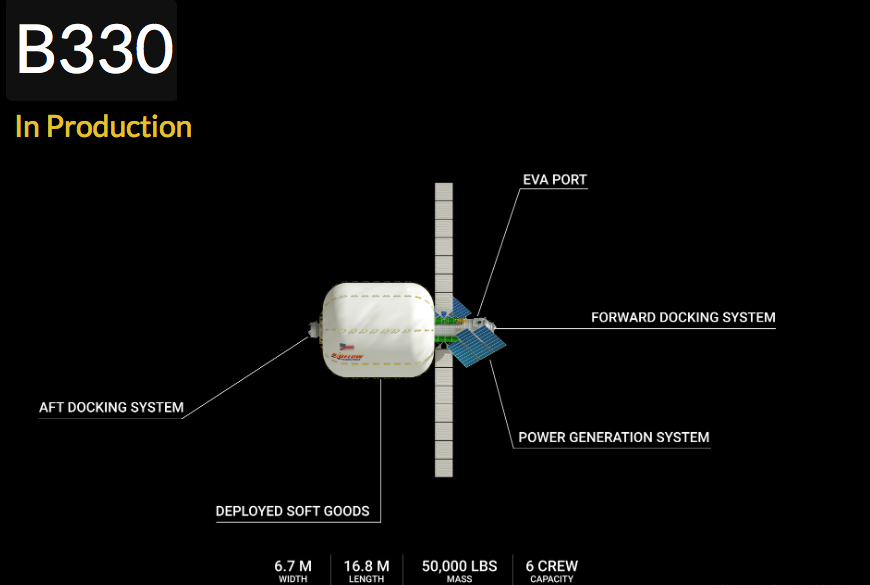Bigelow Aerospace
Do you have a larger than life personality? Do you possess multi-billion dollar bank account? Have you got experience of building a business from scratch into a world famous mega corporation? Do you have a sharp eye for PR friendly, headline grabbing stunts? Judging by the CVs of the leaders of Blue Origin, SpaceX and Virgin Galactic, the three leading companies involved in the race into space, this seems to be what you need to make it in the world of space technology.
Robert T Bigelow may be less well known, but he is no exception to this rule. Bigelow is the founder and President of Bigelow Aerospace, and he provides the leadership and much of the investment for the company’s projects. Like his fellow space moguls, Mr Bigelow made his money turning a small start-up business idea into a multi-billion dollar operation. For Bigelow, it was his Budget Hotel chain, which he founded in 1987. It was using funds derived from this enormously successful business that he founded Bigelow Aerospace around twelve years later, in 1999.
But the comparisons don’t stop there. Mr Bigelow is a master of media friendly publicity activities. In 2007, he launched a spaceship with his grand daughter’s name clearly emblazoned upon it. Plus there was the well-publicised offer to fly personal items like business cards and even cremated ashes into space for just $299. He’s used his spacecraft as an orbiting billboard and even tried to broadcast a live game of bingo from space, although this attempt was thwarted by some malfunctioning equipment. He has even named his company after himself, which none of his big name competitors saw fit to do.
However, there is one notable point of difference with his Big Three rivals. Mr Bigelow is more of an insider. Jeff Bezos, Sir Richard Branson and Elon Musk are frequently seen as outsiders, disruptors of the status quo, mavericks who are determined to get their way through force of personality as well as by using their considerable financial resources.
Robert Bigelow on the other hand, has always co-operated with the big players who are already in the field of space technology. The iconic United States government space agency NASA remains the leading space technology organisation in the western world, and Bigelow Aerospace has operated in co-operation with it, certainly in the early days, rather than attempting to develop its own technology from scratch. But Bigelow’s partnerships with big name operators go beyond even NASA. Giant US civilian / military corporation Boeing have also been and remain valued partners. Bigelow Aerospace seem to have flown under the radar when it comes to worldwide recognition, but industry insiders are more than familiar with its expertise and accomplishments.

History & Development of Bigelow Aerospace
Bigelow Aerospace is located close to Las Vegas in the state of Nevada in the United States. Its mission is a little more specialised than that of its rivals. It is focused on the development of liveable habitats for humans in outer space. The usual term for these habitats is “space stations”, but the company is looking to develop current designs into more imaginative and innovative concepts. In particular, they should be expandable.
The concept of expandability is both practical and cost saving. It is incredibly expensive to launch anything into space. Any savings in terms of weight and volume mean that smaller rockets can be used, and far less fuel is required to achieve Earth orbit. Launching a small, light spacecraft, then expanding it when it reaches space is therefore a great idea.
None of the past or current space stations have included this feature. The first ever permanently crewed space station was the Soviet Union’s Salyut spacecraft. NASA followed up in 1973 with its Skylab station. The Soviet Union (then Russia) followed up with its MIR station. Russia and the US remain the major partners in in the International Space Station (ISS), which continues to circle the Earth today. China too has launched a successful space station, Tiangong 1, which operated successfully for around five years before crashing back to Earth in 2018.
Some of these stations, including the ISS, have been expandable in the sense that they are modular in design: you can add bits on to them. Indeed, the ISS was constructed in this way, with each module launched separately, then bolted together by spacewalking astronauts while already in orbit.
In fact it was NASA which was the first agency to begin work on a more flexible approach to space station technology toward the end of the 20th Century. But when budget cuts and a change in strategy brought an end to their TransHab programme in 2001, Bigelow Aerospace stepped in to keep the development alive.
In 2003, Bigelow bought a licence to continue work on NASA’s patented space station technology, which had been developed via TransHab programme. This technology and architecture has been continually enhanced and developed to this day, in co-operation with NASA. In this way, private investment has come to the rescue when state funding and public interest in the US space programme faded away.
Bigelow Aerospace’s first incarnation of its new expandable spacecraft was the Genesis 1 spaceship. This was successfully launched in 2006, from Kosmotras Space and Missile Complex in Russia, using a converted Russian Intercontinental Ballistic Missile (ICBM). A second successful launch was completed the following year. All this progress meant that the company was able to begin work on a fully human compatible spacecraft in 2007.
The next actual launch did not take place until almost a decade later. This time, the company co-operated with another of its fellow space technology companies to launch an activity and storage module. So it was in conjunction with Elon Musk’s SpaceX Dragon capsule that the Bigelow Expandable Activity Module (BEAM) became the very first expandable spacecraft module to reach the International Space Station.
This was so successful that the following year, BEAM was licenced to remain with the ISS for an extended period, becoming an integral storage facility for the station. It remains linked to the ISS, and the crew regularly carry out radiation measurements and performance tests to evaluate the practicality of the module.
At the time of writing in 2019, it is being used as a storage facility for around 1,000 pounds of cargo for use by the ISS and its crew. Further developments in technology are planned in order to make future versions of the BEAM spacecraft fully habitable. The end goal is to make it a fully functioning extension of the ISS, thereby expanding the capacity of the ISS itself.
This proposed upgrade is coming closer to reality with the development of Bigelow’s B330 spacecraft. This is designed to be a fully autonomous space station, capable of supporting up to six astronauts. It is equipped with its own fully functioning life support systems and launches at one third of its fully expanded size. Once in space, it is expanded to increase to a total of 330 cubic metres of internal volume (hence the name). Although the spacecraft is designed and equipped to operate as a stand-alone space station, it is planned to operate as an additional connected module for the ISS in the first instance.
The company is also currently working in co-operation with both the Boeing Corporation and NASA on a new crew transportation module, designed to ferry astronauts to the ISS and to Bigelow’s proposed new space stations. The Boeing CST 100 Starliner is designed to be able to carry up to seven astronauts.
It is also designed to be cost effective and flexible. It can be re-used for up to ten separate missions, and can be launched via several different rockets. It also has the durability and capacity to remain in orbit for up to seven months. Its first un-crewed automated test launch is expected to arrive at the ISS sometime in 2019.
The Future of Bigelow Aerospace
Like all of the privately owned space development companies, Bigelow Aerospace is full of grand schemes and ambitious future plans. Not all will come to fruition, and those that do are unlikely to arrive as quickly as promised. But it would be unwise to bet against at least some of them coming to fruition eventually.
In 2017, Bigelow Aerospace announced a co-operation deal with United Launch Alliance (ULA) to place a B330 space station into orbit around the Moon. The idea behind this ambitious plan is to provide a depot for a future moon base. The proposed launch date is 2022. This may seem ambitious and fanciful, but some of our more senior readers may recall that such a station was imagined way back in the 1970s with the iconic TV sci-fi series Space 1999. Maybe science fiction really is about to become reality.

The following year, Bigelow announced the launch of a new division of the company called Bigelow Space Operations. This is to be a new commercial company whose job it will be to manage, market and operate privately run space stations, which the parent company plan to launch in 2021. At least two B330 space station launches are planned, so work has begun to find customers willing to pay for missions and provide trained astronauts for these planned stations.
A larger station is also in development. This is proposed to have a capacity of well over twice the size of the ISS. Time will tell if there really is enough demand for such an ambitious project. Is the global, national and corporate commercial space market large enough to make such a large privately owned orbiting space station viable? Bigelow Space Operations are going to invest millions of dollars in order to find out. And if it doesn’t find enough corporate or business clients, a space station hotel is also proposed. It seems unlikely that customers of Mr Bigelow’s Earth bound Budget Hotel chain will be able to afford to stay at this particular destination though.
So there is no doubt that there are grand plans in Mr Bigelow’s sights. They may seem outlandish and indeed out of this world. But given his successful track record, no-one should be surprised if he was to prove the doubting pundits wrong yet again.
